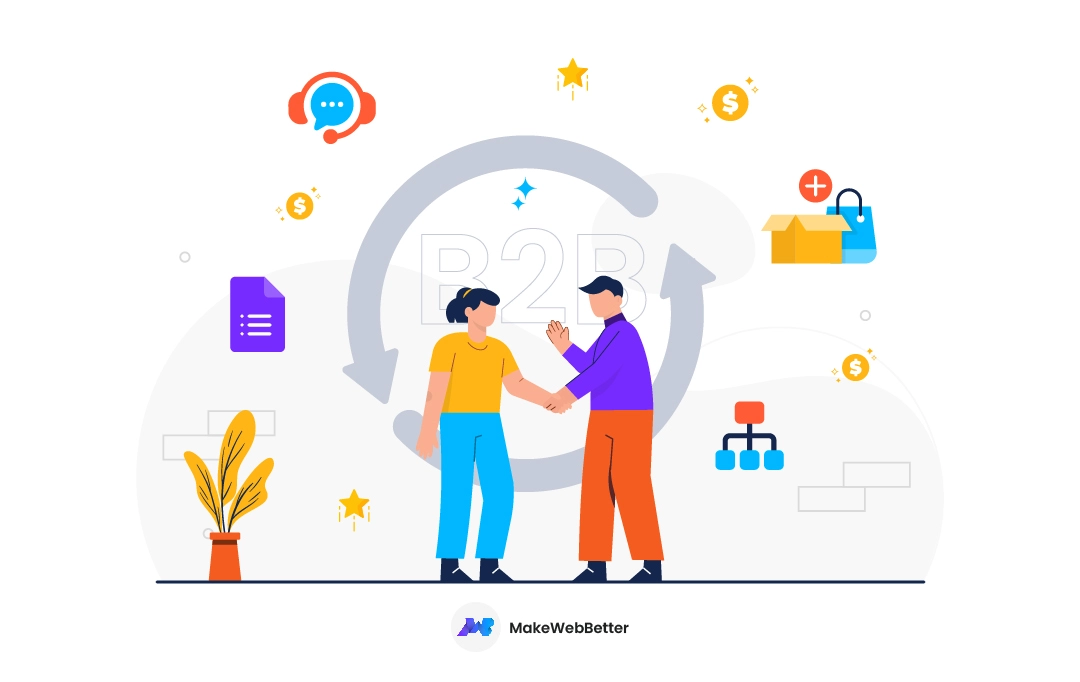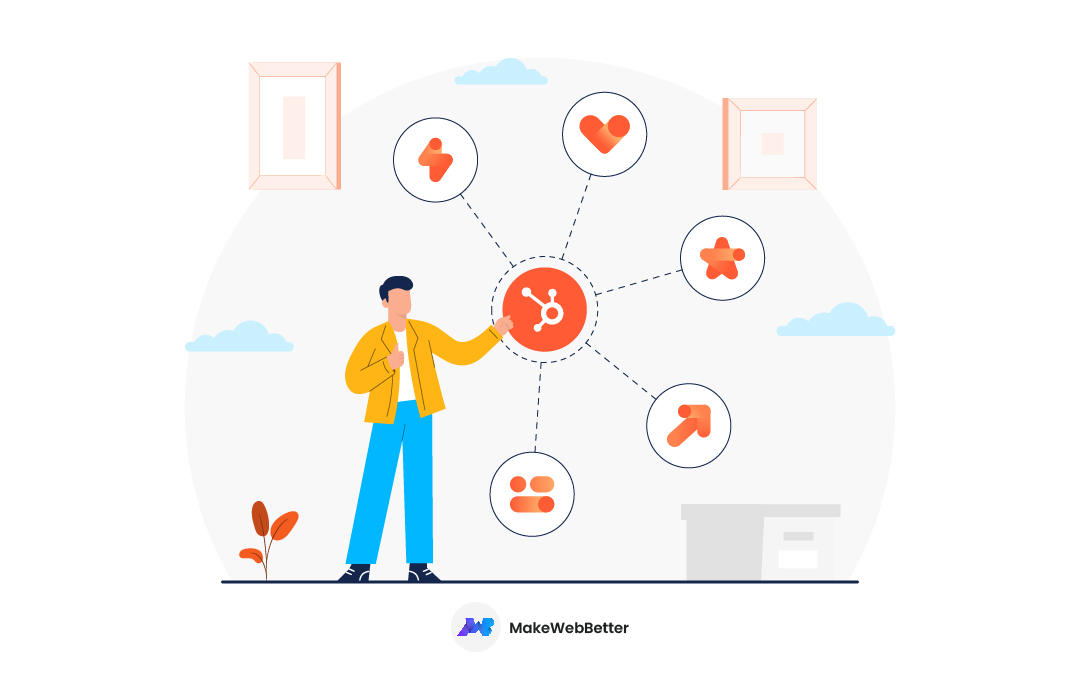Every business implements several lead generation strategies to generate leads, but have you ever wondered what you should do once you generate those leads? This is precisely what we are here to help you with.
Once you start generating leads from your strategies and campaigns, you need to focus on lead conversion and guide that prospect through the process. Converting your leads into customers helps your business grow and increase revenue with ROI. You must plan your lead conversion strategies based on your target audience, their needs, expectations, motivators, and pain points.
We are here to guide you on the steps, strategies, and metrics you need to look out for while converting your leads.
What is Lead Conversion?
Lead conversion is when you convert your prospects into paying customers. The lead conversion process involves nurturing a lead and moving them through your sales process until they reach your goal. Both the sales and marketing teams must work hand in hand with each other to direct the leads down the sales funnel. Lead conversion strategies include tactics such as behavior automation, retargeting, and email nurturing.
This is different from lead generation because that mainly focuses on turning visitors into leads, whereas lead conversion is about converting a lead into a loyal customer. A sales qualified lead goes through several stages before turning into a customer and is nurtured in every stage of the sales funnel.
Let’s find out the lead conversion stages in the section below.
Steps Involved in Lead Conversion Process
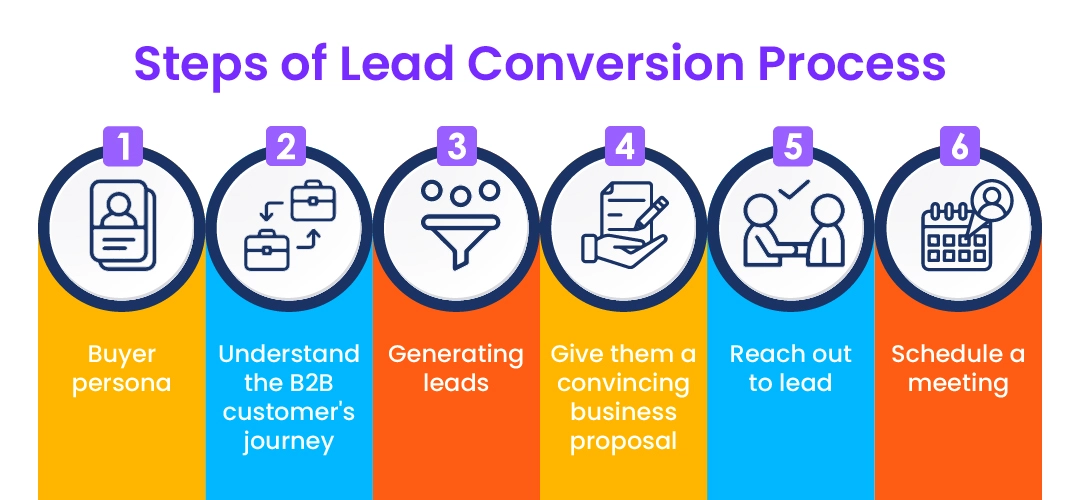
Step 1) Buyer Persona
The first step of the lead conversion process is to identify your buyer’s persona. A buyer persona is a detailed description of prospects that can be converted into customers. B2B companies build buyers’ persona after a deep research on their target audience and have a lot of details such as the person’s age, profession, income, location, goals, and challenges they face, among others.
The best way to create a buyer’s persona is to send out a survey. A buyer’s persona is the key to marketing success because it tells you how to optimize your landing pages with the content that would appeal to your target audience. This will also help you to drive more traffic and convert more leads.
Step 2) Understand the B2B Customer’s Journey
Once you have identified your buyer persona, you can head over to the next step. A B2B customer’s journey usually consists of three main stages:
- Awareness: This is where the customers try to find a solution to a problem, challenge, or pain point they might be facing. In some cases, the buyer may not even recognize that it might be a problem that needs to be solved until they research it. The content they find will give them an idea of the area of improvement and give a name to their problem.
- Consideration Stage: Now that the lead has a clearly defined problem, they might get committed to researching and understanding the different approaches or solutions that can be taken to solve that pain point.
- Decision Stage: Prospects in this stage would have decided on which solution, method, or strategy they want to use to eliminate the problem they are facing. This would usually require them to research the various vendors’ different products or services and then whittle the options into a short list.
Step 3) Generating Leads
Once you are familiar with the buyer’s journey, you will have to start generating leads. A lead or prospect is a person who might be interested in what your brand is selling. You can generate leads with the help of:
a) Add Opt-in Forms on Landing Pages
Opt-in forms are one of the easiest and most effective ways to generate leads. You can add opt-in forms to your blogs, landing pages, and even weekly newsletters. You can use the details collected through these forms to engage with your leads.
b) Set up Online Webinars
You can hold webinars online and talk about topics in your niche. You can also invite industry experts, so many people visit your webinars. This way, you can gain access to hundreds of email IDs that can be used to reach out to them later.
c) Provide Gated Content
Gated content is when you block access to a quality piece of content such as blogs, infographics, eBooks, whitepapers, case studies, etc., and ask users to enter their contact information. But make sure that the quality of the content behind the gate is good, and so should the meta title and description.
Step 4) Give Them a Convincing Business Proposal
In order to reach out to your target audience, you need a solid business proposal. A good business proposal will highlight your prospects’ pain points and provide solutions simultaneously. You must also show them how your products and services can solve their problems and include information on your pricing and ways to get in touch with you.
Step 5) Reach Out to Leads
Once you have collected your leads, you can move to educate them about your products and services. You can reach out to them in various ways, but the top two ways are:
- Email marketing: Email is one of the oldest and most effective marketing channels today and most marketers use it as their primary channel for lead conversion. You can email your prospects about your services or give them the latest update on your new products or blogs.
- Using LinkedIn and Twitter: LinkedIn and Twitter are the top two B2B social media platforms and among the best ways to connect with your prospects. Start by sending them a connection request, and once they connect with you through these platforms, you can try to engage with them and build a relationship.
![]()
Step 6) Schedule a Meeting
The last stage to converting your leads is scheduling a meeting online or offline. One thing you should do while talking to your clients is to be confident and convey your purpose and intent. Remember, you’re representing your business and you reflect your brand.
For example: You can share a CTA or a simple link to book a meeting with the respective client as Book A Meeting!
Most Effective Lead Conversion Strategies
1. Add CTAs to Inappropriate Places
CTA or Call to action is a marketing term that refers to any design or element that prompts your users to take any action or encourage an immediate sale. A CTA is often the immediate response that a marketer wants you to take and comprises two to three words or small phrases. A CTA sometimes acts as the first step toward acquiring your lead, so it should be eye-catching and compelling simultaneously.
These CTA can be included in your email pitches, social media posts, landing pages, sales scripts, etc. You will also find CTAs added in the form of a clickable button with action-oriented words like “Download”, “Register” or “Sign-Up” added in most blog sites you visit. CTAs help creates a sense of urgency and persuades them to take action faster.
2. Implement Content Marketing Strategies
Content marketing is sometimes not given importance like email marketing and social media marketing, but when done well, it can help you throughout your sales and marketing process. Using the right content marketing strategies will help you generate qualified leads and push them towards the later stages of the sales funnel. This strategy allows you to create content in a way that educates your prospects on your product or service and increase engagement with them.
Before putting out content, you must understand what your target audience wants and make content by keeping your lead’s best interest at heart. It is also important to promote those blogs, eBooks, infographics, whitepapers, etc., through the right channels and be sure to publish them at the right time. It is always good to invest in building a good content marketing team that will help you in the right distribution of the content.
3. Implement Behaviour Automation
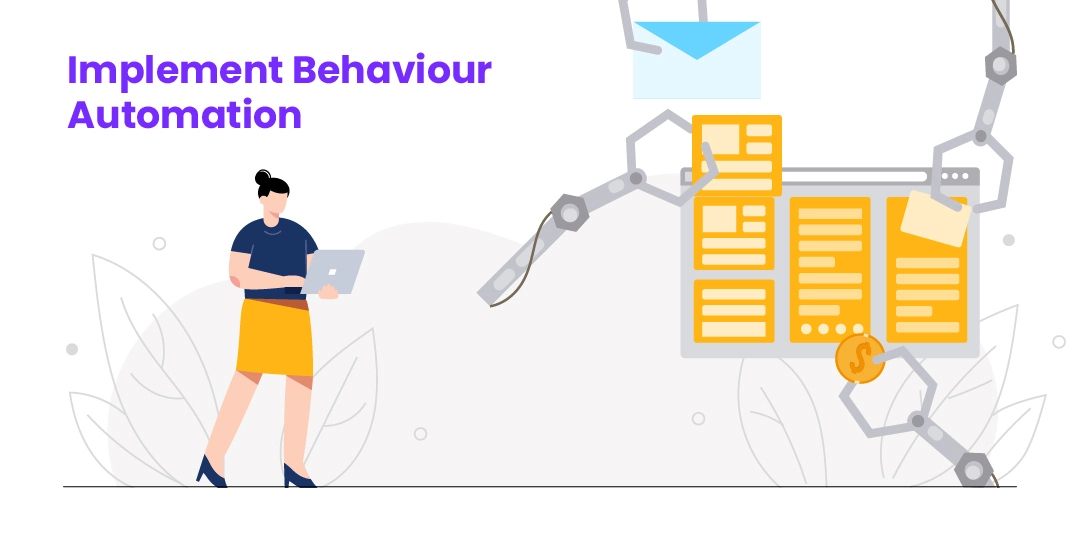
The three main benefits of automation are that it helps save time, makes marketing efficient, and allows you to scale your campaigns. You will be one step closer to purchase if you automate sales prospecting emails such as a free trial offer or a product demo. You can automate emails by setting triggers for the different actions or behavior that a user might show while visiting a website. This will allow you to engage more accurately with your leads.
Defining those behaviors will allow your company to broaden its perspective and be prepared.
List of Behaviors that Should be Focused Upon When the Lead:
- Visits your landing page
- Checks out a specific category
- Adds a product to their shopping cart
- Is looking for a product demo
- Interested in your free trial
- Reviews the pricing page of your products or services.
- Inquire about the features via email, chatbot, or other channels.
i) Include Customer Testimonials and Case Studies
You may be able to engage with your lead with the help of a blog by giving them solutions to their problems and educating them about your services and products through eBooks, but only a case study will help you change their purchasing decision. Customer testimonials can also be powerful when it comes to the lead conversion process.
The customer testimonials help you build a recognizable brand. The data you collect from your feedback and testimonials can be used to make an in-depth case study of how your services or products solved your client’s pain points. Case studies are the type of content pieces that help you drive a lead from the awareness stage of your product to making a purchase.
ii) Create Landing pages
When a visitor clicks on the CTAs added in the promotional content, it directs them to a well-designed landing page. The landing page is what provides detailed information on the products or services you are trying to sell to them. Once they visit the landing page, you collect their contact information like name, email address, and phone number and build engagement with them.
The information on the landing page should value the visitors to get interested in your product or service. According to a few studies, our landing page should be converting 20% of the time, and if you are getting fewer forms, then you need to rethink your landing page. The landing pages must also have personalized elements to easily narrow audiences and capture leads more effectively.
iii) Retarget your Leads Through PPC
Pay per click or PPC is one of the easiest ways to reach out to your target audience, rank on the SERPs, and retarget your leads. Retargeting is said to be the most proven method for lead generation. According to the study, over 75% of people consider paid ads to help find what they need.
PPC will help you target your ads to those who have visited your website or landing page. Make sure to offer discounts or other offers and deals that may be relevant to your target audience. Your CTAs must be clear, while the content must provide them value and align with their interests.
6 Most Insightful Main Lead Conversion Metrics
The right metrics will help you calculate and determine the success of your marketing efforts in achieving your sales goals. Here are the metrics that you need to have a track of the leads being converted:
- Lead conversion rate: This metric helps you check the number of leads you can convert and your company’s ability to attract an audience.
- Calculate the lead conversion rate: Total number of new customers / Number of leads*100
- Time to convert: This metric helps you identify the time it takes for a visitor to convert into a sales qualified lead and a customer.
- Calculate the time to convert: Total time spent by all visitors / Total number of leads
- Cost per conversion: These metrics show how much it costs to convert a single lead into a customer.
- Calculate the cost per conversion: Total cost of advertising / Number of conversions
- Lead value: This is also a vital metric as it helps you estimate how valuable leads are to your company’s growth.
- Calculate the lead value: Total sales value / Total leads
- Lead-to-sale conversion rate: This metric shows how likely your lead is to make a purchase.
- Calculate the lead-to-sale conversion rate: Converted Leads / Total Lead Volume
- Conversion ROI: This metric will allow you to track the return on investment (ROI) for every lead that gets converted.
- Calculate the conversion ROI: (Lead value – Cost) / Cost
What Should your Lead Conversion Rate be?
The lead conversion rate can depend on various factors like the channel of lead generation, the strategies implemented to convert those leads, and the time it took to convert them among others. The lead conversion rate can also vary on the industry your company belongs to. And since lead conversion happens at various stages across different touchpoints, no single set percentage can be used across industries. However, a good lead conversion rate is said to be over 1 to 3% based on the study done by Econsultancy.
Field Mapping
Field mapping is a process that helps you manage the leads. It is a necessary process before closing the sales. This opens up many opportunities for qualifying leads before passing them on to sales. And provides instant access to the sales representatives in tracking their prospects.
When you convert a lead, standard lead fields are automatically converted into personal accounts, contacts, and Opportunities as mapping is given below. Companies like Salesforce provide a feature, where users can directly convert Lead into Account-Contact-Opportunity [ACO]. During the Salesforce lead conversion, these values will then transfer to those fields on the object of choice.
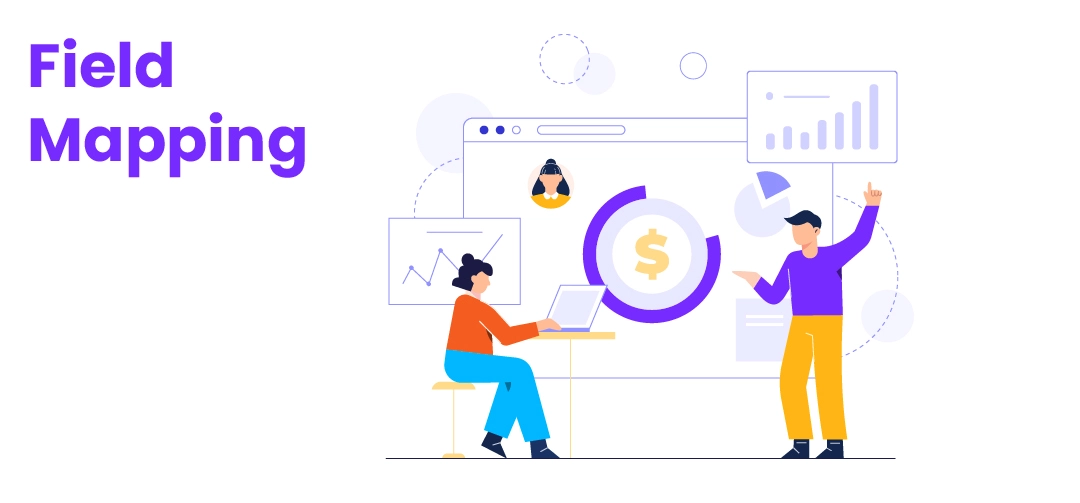
Benefits of Field Mapping
- Optimize the lead process till the end when they make a purchase.
- Prevents leads from dropping off the sales funnel.
- Guides lead to the right landing pages.
- Helps sales representatives convert leads in a cost-effective manner.
Guidelines for Field Mapping
- A lead field can map to custom account, contact, and opportunity fields simultaneously.
- Each target field can have only a single source field mapped to it.
- If you want to remove a field you have to delete its mapping first and then remove the field.
- You have to remove any mappings of referenced fields before uninstalling the package.
Conclusion
Converting leads can be difficult, but you can overcome its challenges by applying the right strategies. You just have to follow the steps mentioned and implement the strategies to increase your lead conversion rate. It is very important to nourish and nurture your leads to convert them into your clients. Do remember to modify the strategies based on your niche.
And make sure to calculate your lead conversion ratio and track them frequently. You can also try field mapping to convert your leads much more efficiently. Now that you know the process of converting prospects, you can start growing your client base.



